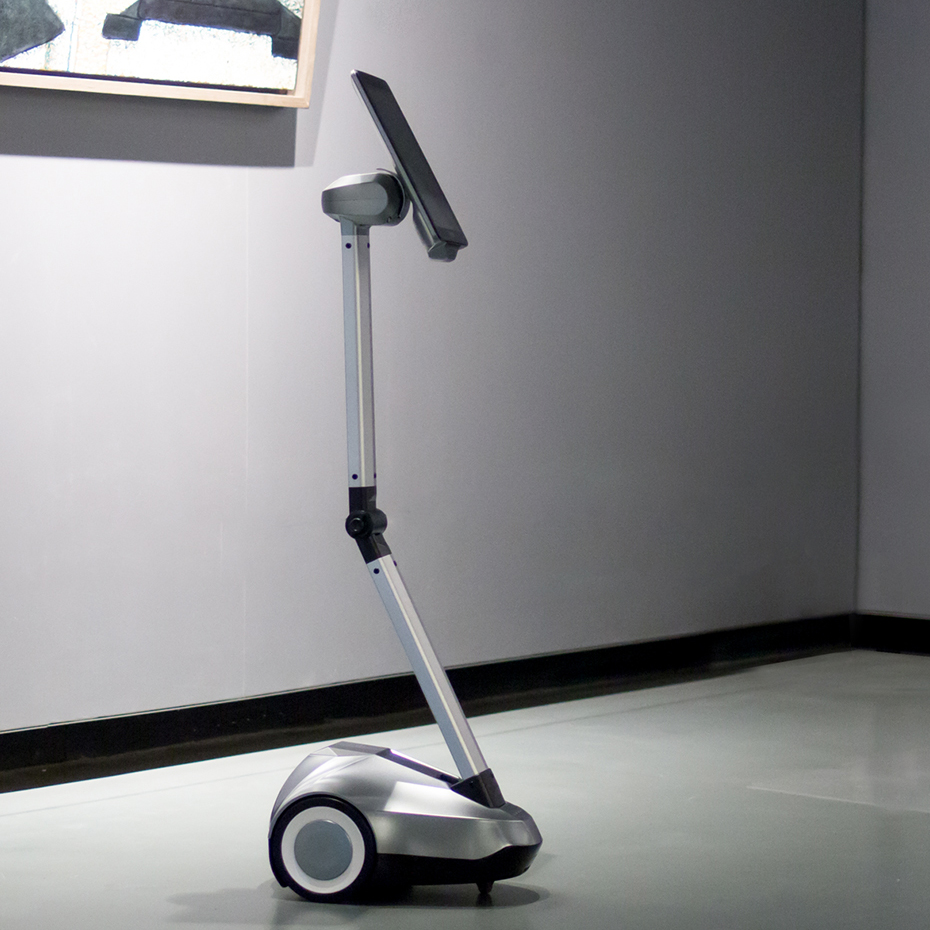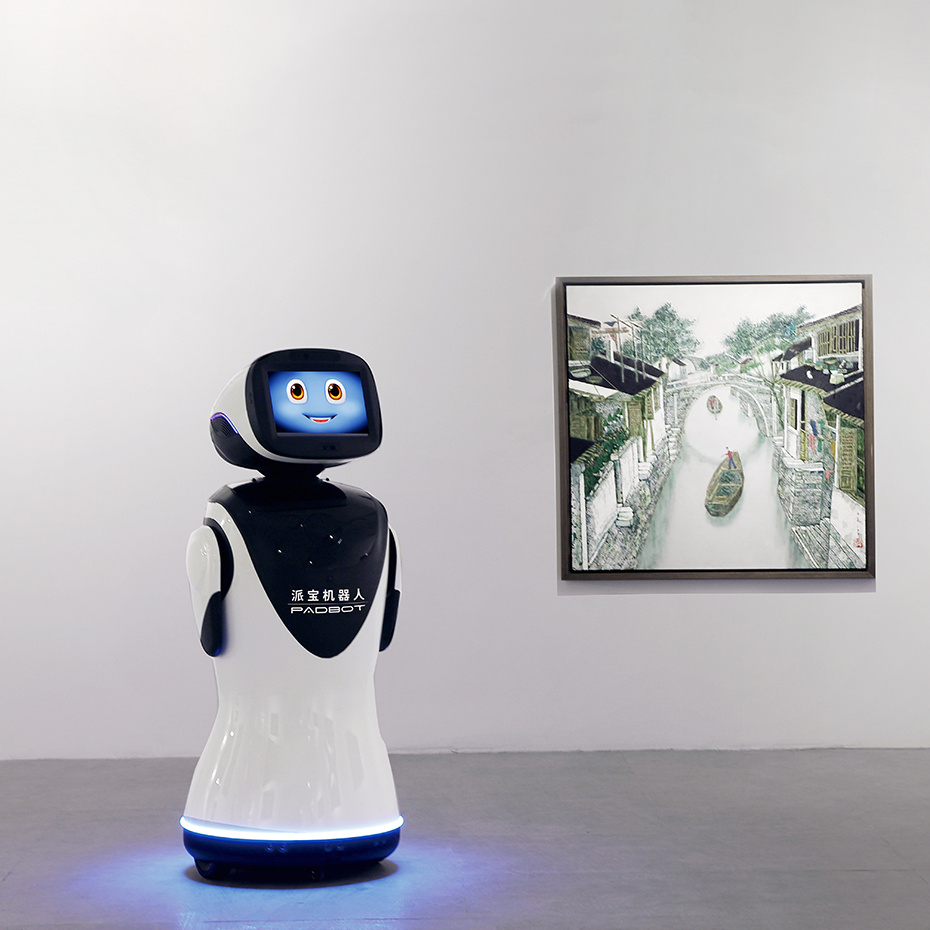Here’s How Telepresence Robots Will Disrupt the Workplace

The rise of remote work is having a major impact on businesses of all kinds. It’s more normal than ever to clock into work from home. Businesses have shifted from centralized offices to distributed teams. However, there’s something that’s lost when workers go remote. Team members who work from home may have a hard time connecting with people in the office. In some cases, remote work may also make a task difficult or impossible. Doctors, for example, may have a hard time examining a patient with just a fixed webcam on a laptop.
Telepresence robots, which use monitors and speakers to simulate a worker's presence, are one way to overcome these issues. While still experimental, telepresence tech is already impacting workplaces ranging from conventional offices to hospitals. Over the next few years, it could reshape how we think about work.
What Are Telepresence Robots?
At their simplest, telepresence robots consist of a computer with an internet connection, monitor, stand, and wheels. A person using the robot will act like they would in a web conference. They look into their web camera, speak, and their image appears on the robot’s monitor.
More complex robots may offer more features. For example, some robots can swivel or tilt their monitors. This allows a remote user to look up and down or gesture at objects. More advanced robots may feature full 360-degree camera rotation. These bots enable users to swivel the camera, giving them the best possible view of their environment.
Some robots also come with humanoid chassis to make them look more personable and approachable.
Cutting-edge telepresence robots get around using a combination of user-set waypoints and AI tech called machine vision.
Here’s how it works. Using its on-board camera, the robot takes in visual data on its surroundings. Then, using a sophisticated AI algorithm, it breaks down what it’s “seeing.” For example, it may identify where the floor is, or potential obstacles it may have to navigate around.
Then, the user sets a waypoint for the robot to move towards. The robot, using AI-powered navigation tech and machine vision, moves itself there safely. With this combination of tech, the robot can move around and avoid getting caught on obstacles or uneven surfaces.
Despite being niche compared to some robot types, the telepresence robot industry is growing fast. In July 2019, the market was worth more than $189 million and was on track to hit $789 million by 2027.
How Telepresence Robots Are Already Changing Work
Despite being new tech, there are already a wide variety of telepresence robots on the market. In some industries, these robots are already reshaping how people approach work. Some of the biggest beneficiaries have been offices, schools, and hospitals.
Telepresence Robots in Hospitals
For example, during the COVID-19 pandemic, hospitals quickly realized it wasn’t safe to let family members visit sick relatives. To help families keep in touch, they turned to new technology. In some Italian hospitals, robot nurses with monitors and speakers acted as telepresence robots.
These robots can wheel themselves from room to room, allowing patients to make video calls with relatives. They also allowed doctors and nurses to check in on patients remotely.
Experiments like these had a major impact on health care systems around the globe. Not only do they help families stay in touch, but they also allow doctors to serve more patients.
This could have big implications, especially for rural or hard-to-reach hospitals. With telepresence robots, a specialist from a major city could talk with a patient without the need to travel.
Family members who are unable to travel could also stay in touch more easily with sick relatives.
Telepresence Robots in Schools
Schools also began experimenting with telepresence robots during the pandemic. To help make virtual school feel a little more like the real thing, some school districts turned to telepresence. Students who needed to attend school from home could opt to use these robots. The tech allowed them to move from class to class or look around a classroom with an adjustable on-board camera.
Because these robots have cameras that can swivel a full 360 degrees, students can use them to follow the action in a classroom. By turning the robot, they can get a better view of the board or more easily hear their teacher.
These robots had already made a major difference for some students even before the pandemic. For example, one school in the remote Kodiak Island School District of Alaska needed a specialist teacher. However, it wasn’t practical to fly one in. Instead, the district turned to a telepresence robot to bring the teacher to their students.
The robot, little more than an elevated monitor on wheels, allowed the teacher to come to class remotely. With the robot, the teacher could move around the school to engage with students in different classrooms.
In the future, these robots are likely to have similar impacts but on a larger scale. Rural and remote schools will benefit from teachers being able to teach without relocating to the area. Students will also be able to attend school remotely as needed, helping rural students keep up with their peers.
Telepresence Robots in the Office
The use of telepresence robots has also started to change offices around the world. Like in schools and hospitals, telepresence robots make it much easier for remote staff to come into the office.
Offices have used robots for a while. One 2015 video from Wired, for example, shows off an early application of the tech. The video covers the basics of office etiquette when one of your co-workers commutes via robot.
In offices, telepresence robots help make collaboration between remote and in-person workers a little easier. With the robot, remote workers can steer themselves around an office and get a better look at their environment.
This helps to provide more immersive and streamlined collaboration with remote workers. The robots also help remote workers feel more comfortable or feel like they’re really in the office.
As tech gets better, these robots are likely to become much more practical. Better navigation tech, more responsive robotics, and faster internet speeds help cut down on some of the biggest barriers to adoption. As they become less clumsy and more immersive, more and more businesses are likely to make the switch.
We already know that remote work is likely to become more prevalent in the future. As businesses start to rely more on remote workers, telepresence robots may become even more common. Soon, they may be one of the best ways to help preserve the social parts of the office space for remote workers.
The Future of Telepresence in the Workplace
Over the next few years, telepresence robots will probably become more sophisticated. New tech may become common, like better speakers, improved monitors, and wider ranges of motion.
These robots, which are already used experimentally in hospitals, schools, and offices, may quickly become more common. Industry estimates suggest we’re headed in that direction — with market forecasts expecting explosive growth in the next few years.
Soon, it may not be unusual to speak with a specialist via robot, or to roam your workplace using a telepresence bot.
Feature Image Credit: Steve Jurvetson, CC BY 2.0 via Wikimedia Commons
Thanks for helping to keep our community civil!
This post is an advertisement, or vandalism. It is not useful or relevant to the current topic.
You flagged this as spam. Undo flag.Flag Post




